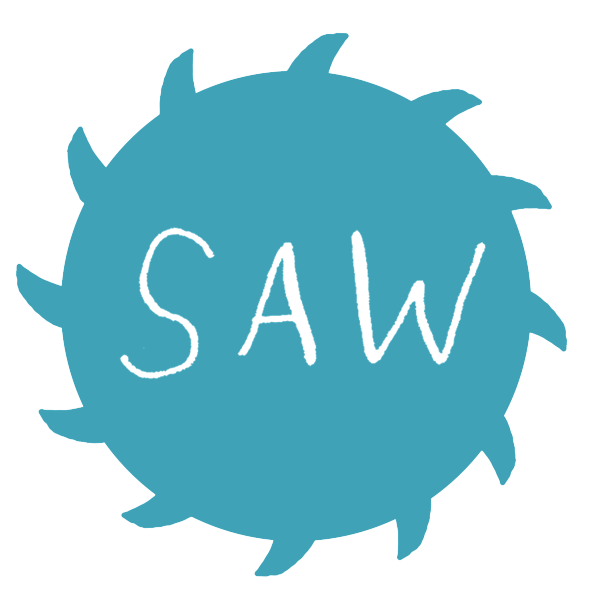Excerpts from The Act of Drawing
Discovered a great book at the shared house for itinerant artists at the Hui No'Eau center: Edward Laning's The Act of Drawing Here are some excerpts and some of my commentary below them.
From The Act of Drawing, by Edward Laning
p9.
Artistic potential is develpoed and perfected only by practice, initially in close association with a respected master, and by frequent and studious visits to the musuem. These are the three touchstones of an artist's life: continuous practice (which must become so habitiual that it is second nature, as taken for granted as breathing); criticism (the criticism and advice of a "master" will be superseded by the criticism and advice and examination of peers); and constant study, in the museums, of the greatest works of the past in the artist's own and related mediums.
(I think this is crucial advice and it's these three things we value at SAW: practice, critique and a constant source of history and inspiration. That's why our main room is also our library. Regarding practice, though, let it be said that a 4th value, community, really strengthens that. -TH)
p 12.
Perhaps we can say that all meaningful motion is drawing.
(This after a passage about drawing being a form of touch, and any act of movement that is an effort to recreate a touch is drawing...-TH)
p 16-17 on symbols etc.
Drawing is a language, and our lines marks and smudges are to our language;, what letters are to a writer's. But words are not things; the name of a thing is not the thing itself. A drawing is made of symbols and is a symbolic representation of reality. Any language presupposes a society- for the most part our symbols are not invented by ourselves but are recieved from others. We accept them and share them. The average man is content with the names of things.... [the artist is not] content to dismiss the object with a name or a symbol but he insists on examining it, taking it apart, and putting it together again, rearranging it, and playing with it.
The symbols which the artist uses can become exhausted and shopworn, just as words can, and thereby lose their power to evoke reality. Usually it is sufficient to put these worn-out symbols aside for a while and search for fresher terms. The abandoned signs and signals are nearly always "rediscovered" later and given a new lease on life.
(I this is what is going on in a broad and interesting way in what is being called "Fusion Comics" (by Frank Santoro) and also not happening enough by young American students of manga, YET. The manga "signs and signals" are constantly being mastered and then a feedback loop is created where artists speak only to people in the know. Best to examine and re-examine your life and subjects, and see if the symbols are still appropriate. Basically, I'm paraphrasing the book...-TH)
p 48.
Art is one field in which it is unquestionably true that we learn by doing. As Leonardo said, "The greatest tragedy is when theory outstrips practice."
Drawing is an art,and art is the resolution of conflict and tension, the unification of opposites, the reconciliation of irreconciliables. Man is the social solitary and is hopelessly divided against himself; the division is intolerablt to him. art is the sole means by which he can live with himself. We have a job to do. In practical terms we accomplish this by working in two unrelated fields simultaneously- our work has form and it has content; it is about itself and it is about something else; it is as realistic as possbile and as abstract as possible. By some mysterious prcess which is called in poetry metaphor and in art invention, the artist brings these differences in unity. This fusion is achieved instantaneously by a kind of leap in the dark, a hunch, an intution. One cannont be taught to take this creative step, but this creative act can only occur within the terms of an art which must be learned and practiced; it is a prize which falls only to those who keep themselves in training.
p 147. We all have our personal manners, our peculiarities and idiosyncrasies. These are, ultimately, our style. But we should guard against this style crystalizing too rigidly, too early. Do not settle for "doing your own thing" until by experiment you have determined beyond a doubt that it is your own.
If anything about drawing frightens you because it seems too difficult, make that the very thing you tackle immediately until your fears are overcome. The earlier you fight these battles, the easier it will be to win them.
(Robert Crumb always laments in interviews not having learned anatomy properly- I can't imagine being disappointed if I drew like Robert Crumb, but it's true you'll eventually learn your shortcomings and be frustrated trying to move past them. -TH)
p. 159
I think that the study of art must proceed on these parallel paths, with its philosophy informing its practice and its practice embodying its philosophy.
